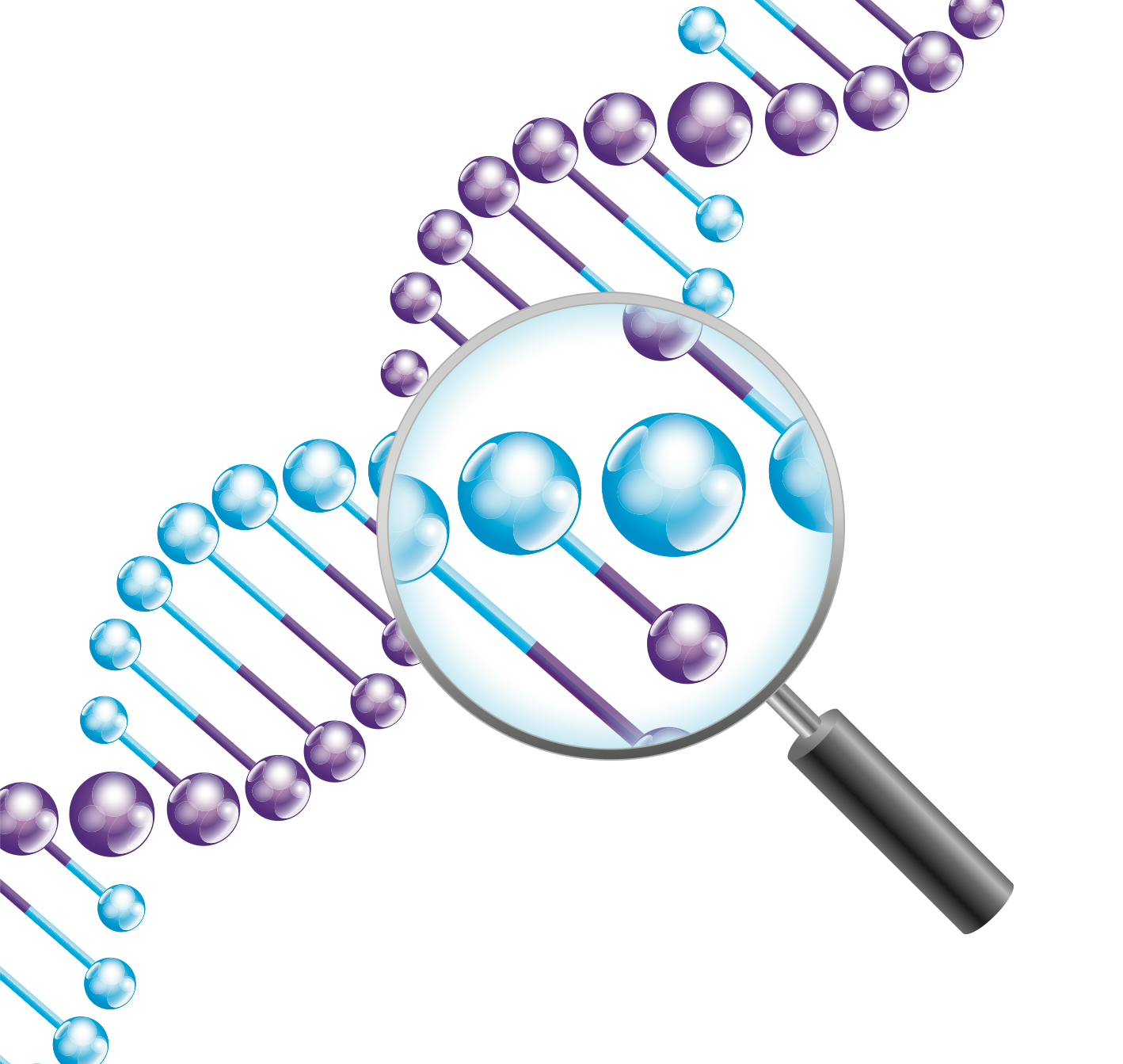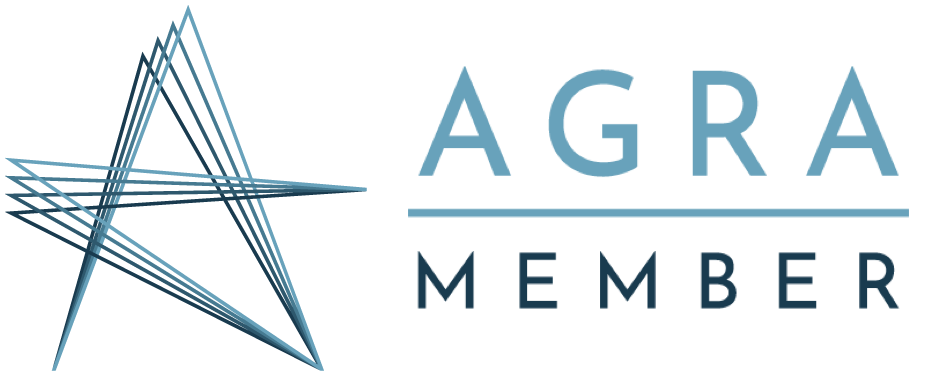MyHeritage Releases cM Explainer
The Announcement
RootsTech has just finished in Salt Lake City in the US and we were all excited to find out the latest innovations from the big companies. Personally, I’m always looking out for the DNA-related announcements. Some big news from My Heritage is the announcement of the release of its new DNA tool, cM Explainer™.
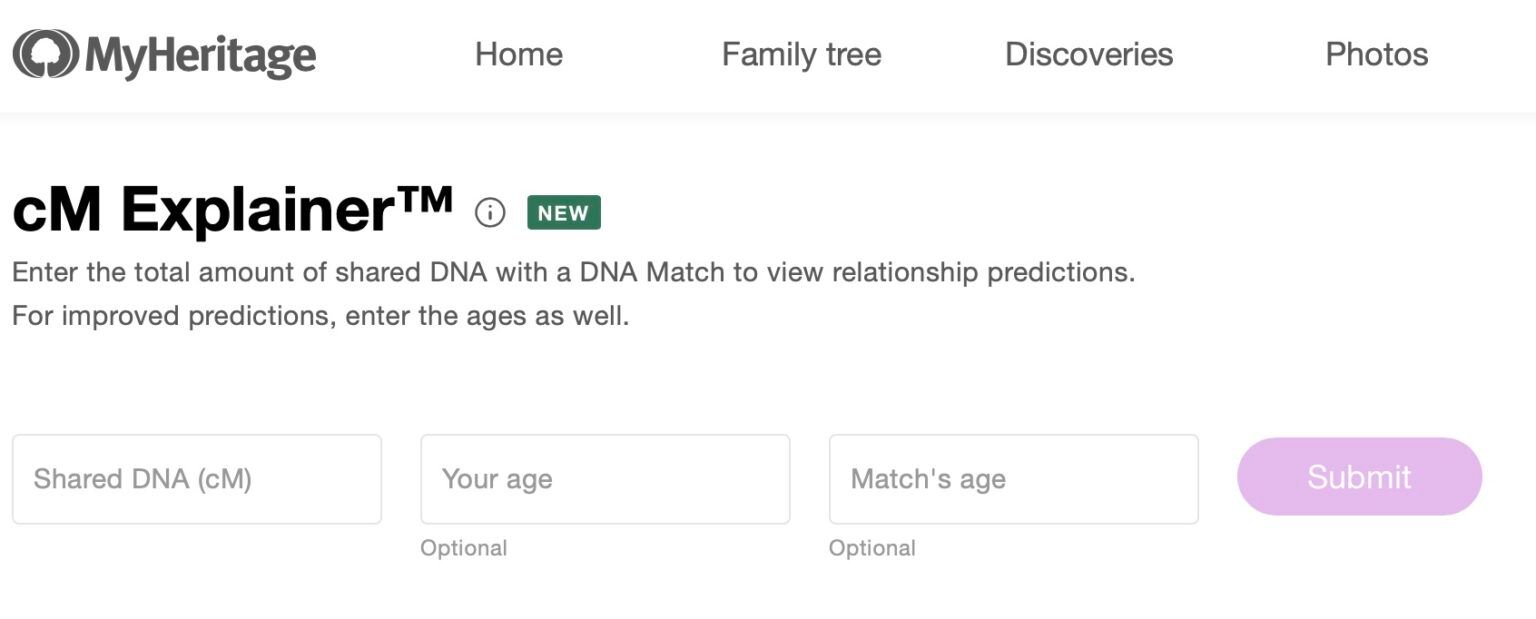
The following comes from the press release [1]:
“cM Explainer™ [is] an innovative, free new feature that accurately estimates familial relationships between DNA Matches. For every DNA Match, cM Explainer™ offers a detailed prediction of the possible relationships between the two people and the respective probabilities of each relationship, determines their most recent common ancestor, and displays a diagram showing their relationship path. cM Explainer™ is fully integrated into the MyHeritage platform to shed light on any DNA Match found on MyHeritage, and is also available as a standalone tool to benefit consumers who have tested with other DNA services.
Other relationship prediction tools typically suggest a range of possible relationships that is too broad to be useful, such as “3rd to 5th cousin”, or list many relationships with the same probability, leaving the user confused. MyHeritage’s cM Explainer™ simplifies the predictions considerably and reduces ambiguity by taking into account the age of each match and assigning a unique probability to every relationship. MyHeritage further reduces confusion by avoiding ambiguous relationship terms used by other tools, such as “first cousin once removed” (sometimes written in excessively technical codes such as “1C1R”), and instead replaces them with clear relationships such as “parent’s first cousin” or “first cousin’s child”, as the case may be. For example, in a DNA Match where there are 1,600 cM of shared DNA between two people who are age 35 and 40, MyHeritage will tell the user simply that the match is most likely a half-sibling with 90.4% probability, whereas a popular alternative tool states a 100% probability for the match to have any of the following possible relationships: grandparent, aunt or uncle, half sibling, niece or nephew, or grandchild, leaving the user baffled. This makes MyHeritage’s cM Explainer™ the most useful tool for relationship prediction of DNA Matches on the market, for novices as well as experienced genetic genealogy professionals.
cM Explainer™ was developed by MyHeritage in collaboration with Larry Jones, developer of the cM Solver technology. MyHeritage exclusively licensed this technology from Jones, and the company’s science team enhanced it further over a period of five months. Among the enhancements are an age algorithm that more accurately pinpoints specific relationships and calculates their probability, and a slick user interface that displays possible relationships and their probabilities. cM Explainer™ includes useful features such as the ability to filter the predictions by full and half relationships, and to display the probable most recent common ancestor(s) (MRCA) of a match, making it a force multiplier for genetic genealogy.”
The Tool
That all sounds great, so let’s try it out. You can access the free standalone version here: cM Explainer™. In the example below I have entered an amount of 212cM but left the age fields blank for now:
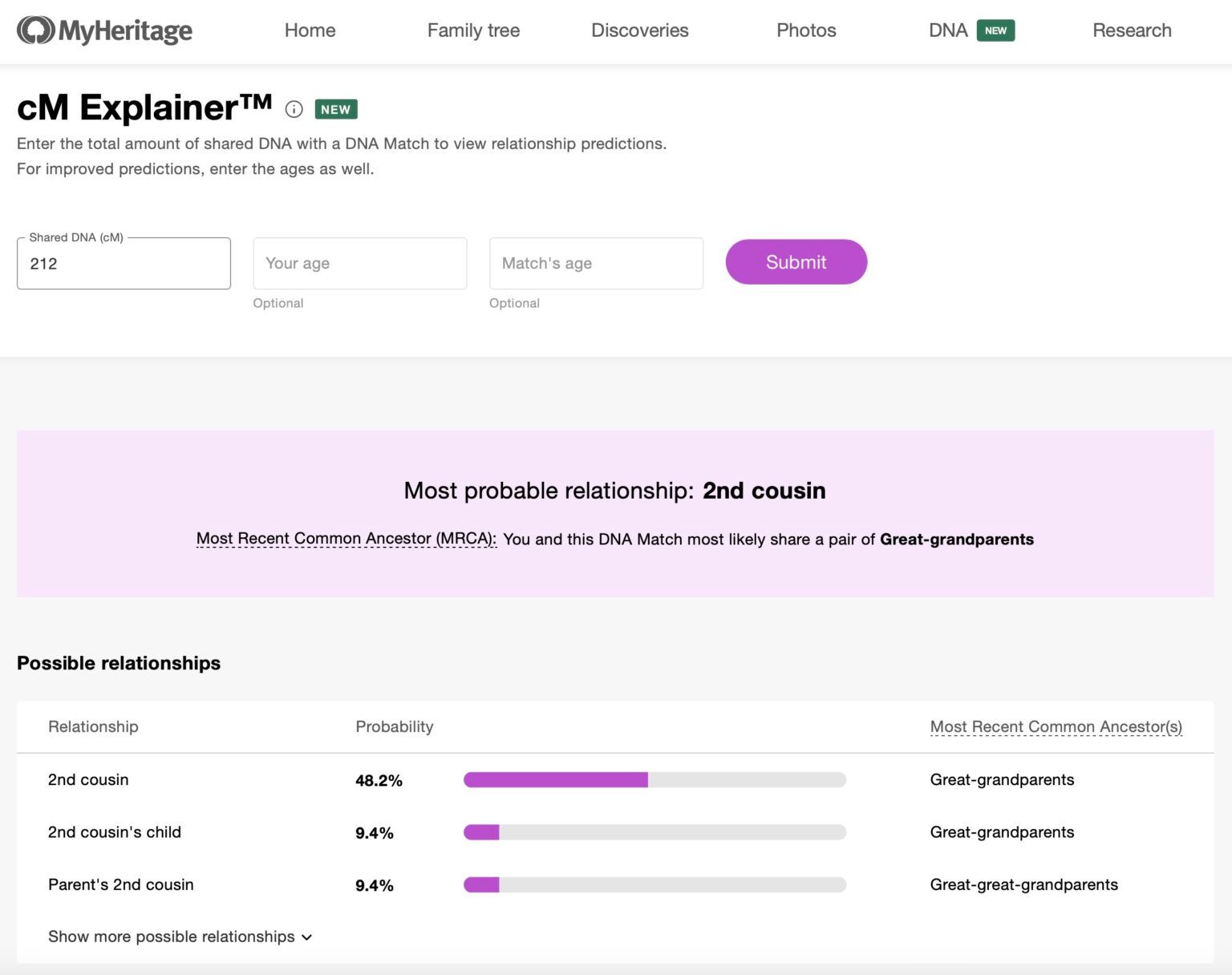
It is evident that the most likely relationship is second cousin, which far outweighs any other possibility. In fact this is the region of the amount shared by my father and his two brothers with a known second cousin. So far so good. What if I, the tester, am significantly older than my match. Let’s say I am in my 80s and my match is in their 30s so, we are likely about two generations apart. This changes things considerably:
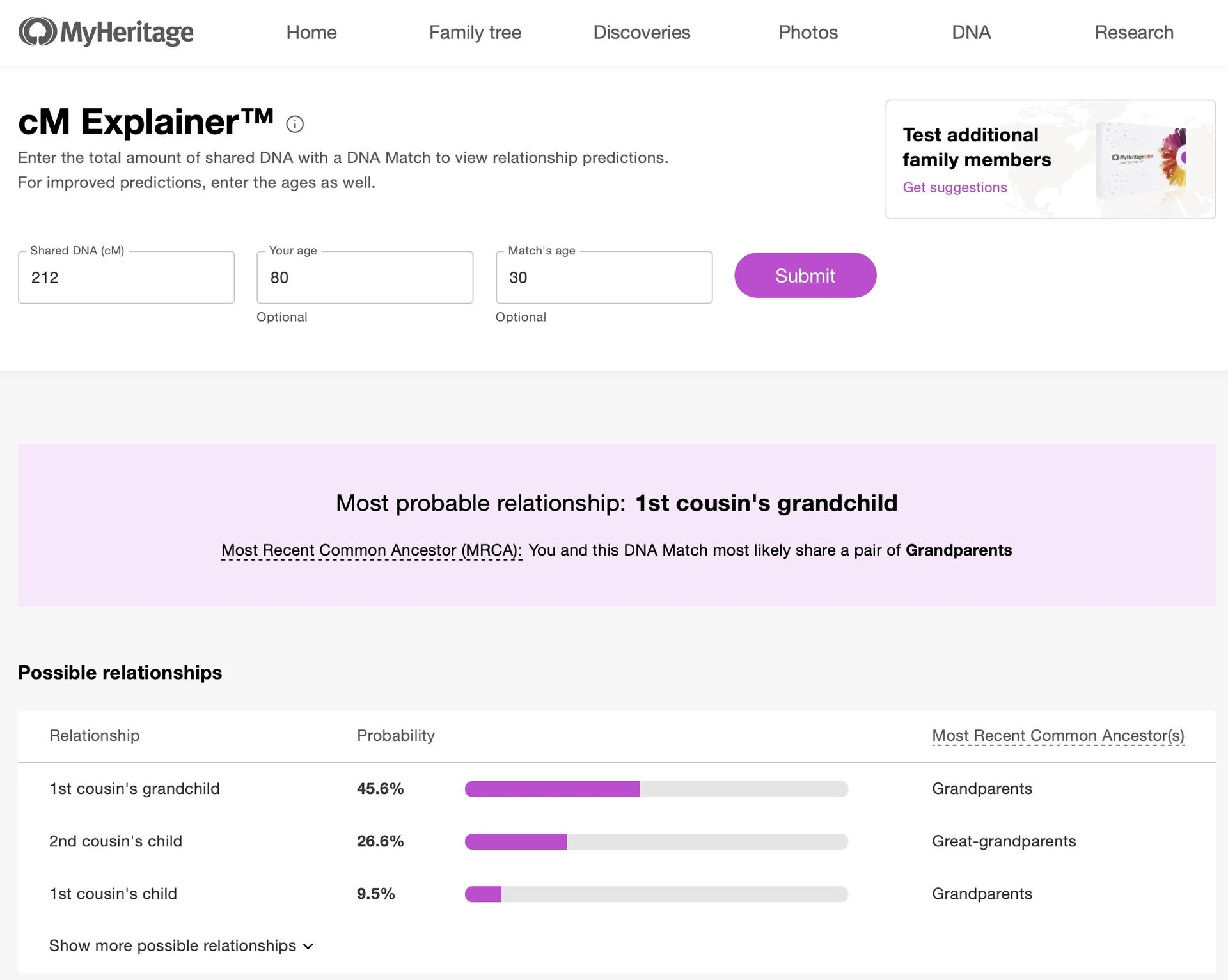
Now it is far more likely that the match is the grandchild of my first cousin, so two generations younger than me as we might expect. We can click on the “show more possible relationships” option at the bottom of the screen to reveal more options.
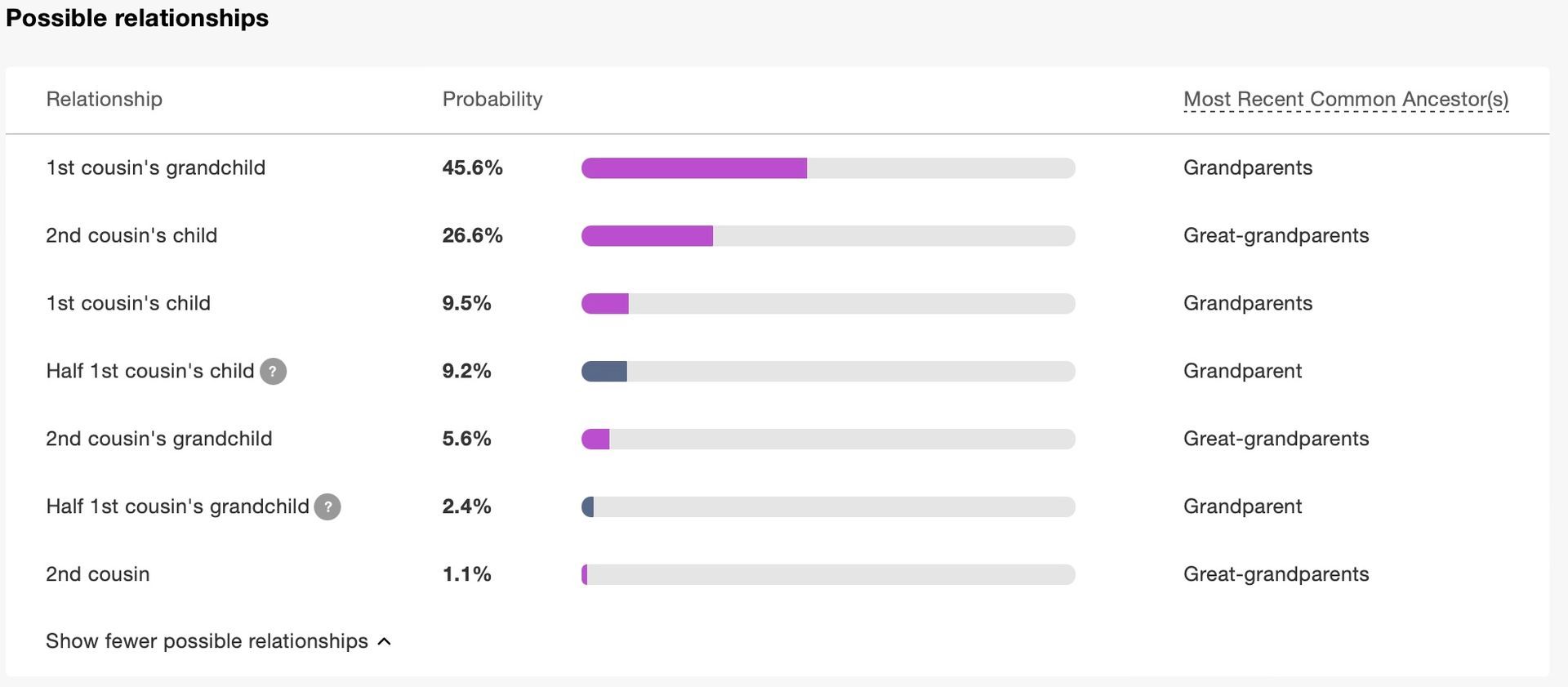
You can see that the second cousin option is still there, it is just far less likely now that the ages of the testers have been taken into account. This makes perfect sense!
A nice additional feature is a view where you can see which are the most likely MRCAs from this data, with the option to show full and / or half relationships. The probability of any particular MRCA is the summation of the likely relationships that depend from it. For example the 55.1% probability of a grandparent MRCA comes from 45.6+9.5%.
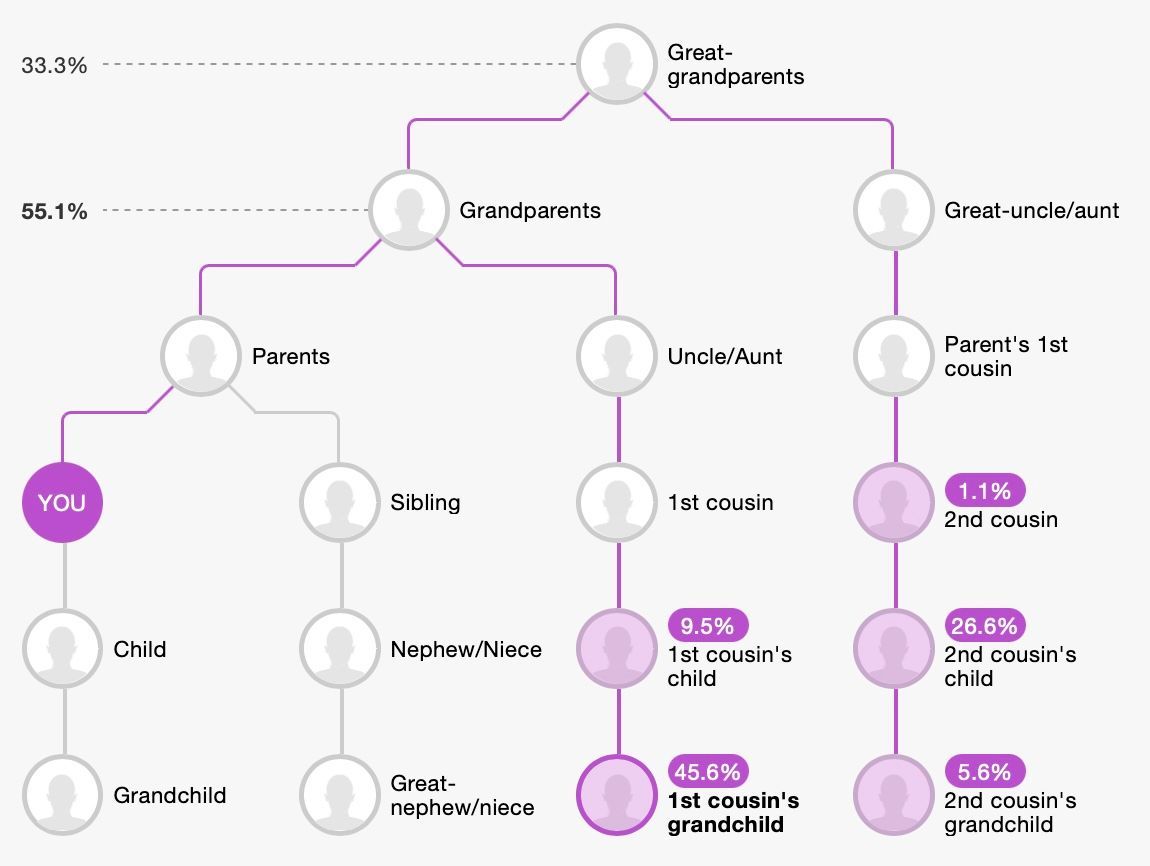
These are the screens you will see if you use the standalone version of the tool (available to anyone, you don’t need a My Heritage account), but you will also find this technology embedded within your match lists if you have tested at My Heritage or uploaded DNA data there. “Estimated relationships” have now been replaced with “probable relationship” and you will also find this in shared match lists too.
You can read more about the cM Explainer here: Introducing cM Explainer™ to Predict Relationships Between DNA Matches With Greater Accuracy [2] or watch the Roots Tech presentation for free here: The Latest Research Tools to Assist with Your DNA Matches [3].
The Questions
As a detailed oriented person there are two obvious questions that come to mind for me:
- How is this different from the Shared cM Tool (the widely accepted “gold standard”)?
- What data is it based upon?
The announcement from MyHeritage tells us that the technology is based on Larry Jones’ cM Solver technology. It’s difficult to find out exactly how the cM Solver worked. I managed to find one YouTube video (here: Announcing the cM Solver tool!) but there wasn’t a lot about the data on which it is based. The RootsTech presentation suggests the predicted relationships start with accepted calculations whereby the amount of shared DNA halves at each generation. The interesting bit is the correction for age algorithms. These started with Larry Jones’ work but the MyHeritage “Science team enhanced it further over a period of five months…. Among the enhancements are an age algorithm developed by MyHeritage’s Science team that greatly enhances the prediction by adjusting the probability of each possible relationship” [1, 2]. This included an evaluation of the range of age differences for each relationship found in the many real examples in customer family trees on the My Heritage website [3]. This sounds great as you no longer need to second guess how many likely generations there are between two individuals.
What about the Shared cM Tool?
The Shared cM Tool, created by Jonny Pearl, is based on two sets of data:
- Over 60,000 examples of real data collected from volunteers who submitted the amounts of DNA shared with known relations, through the Shared cM Project run by Blaine Bettinger
- Algorithms around probability, i.e. the likelihood of each relationship, from Leah Larkin, based on Ancestry’s white paper on matching and meiosis grouping (essentially based on the number of reproductive events).
You can read more detail on this here: Introducing the updated shared cM tool.
The shared cM Tool gives the following relationship possibilities for a match of 212cM (the same amount we looked at earlier):
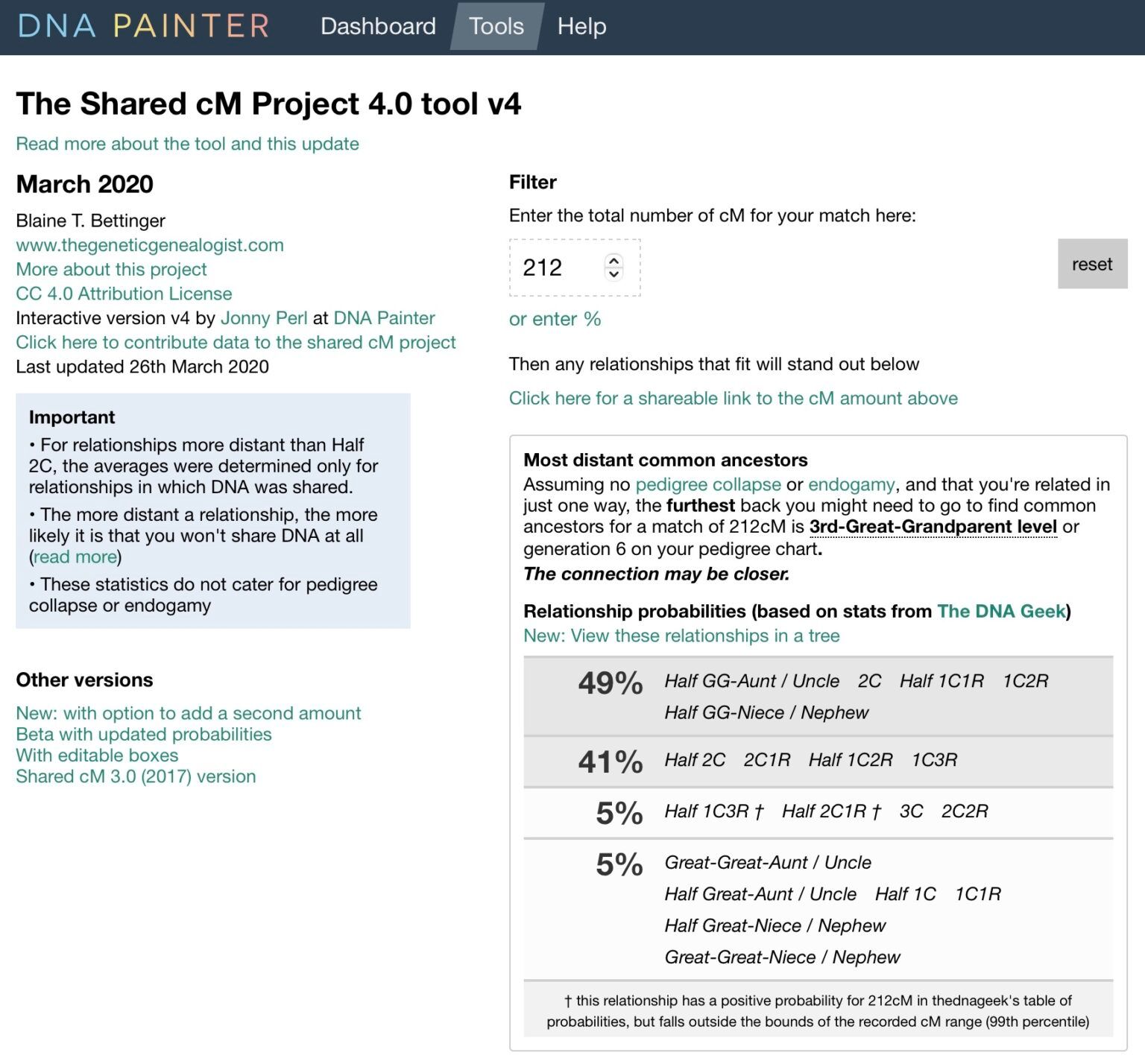
Both the second cousin and first cousin twice removed (1C2R or cousin’s grandchild) relationships of MyHeritage’s cM Estimator appear in the most likely box, along with some other relationships. If we look at this in more detail in the Shared cM Tool:
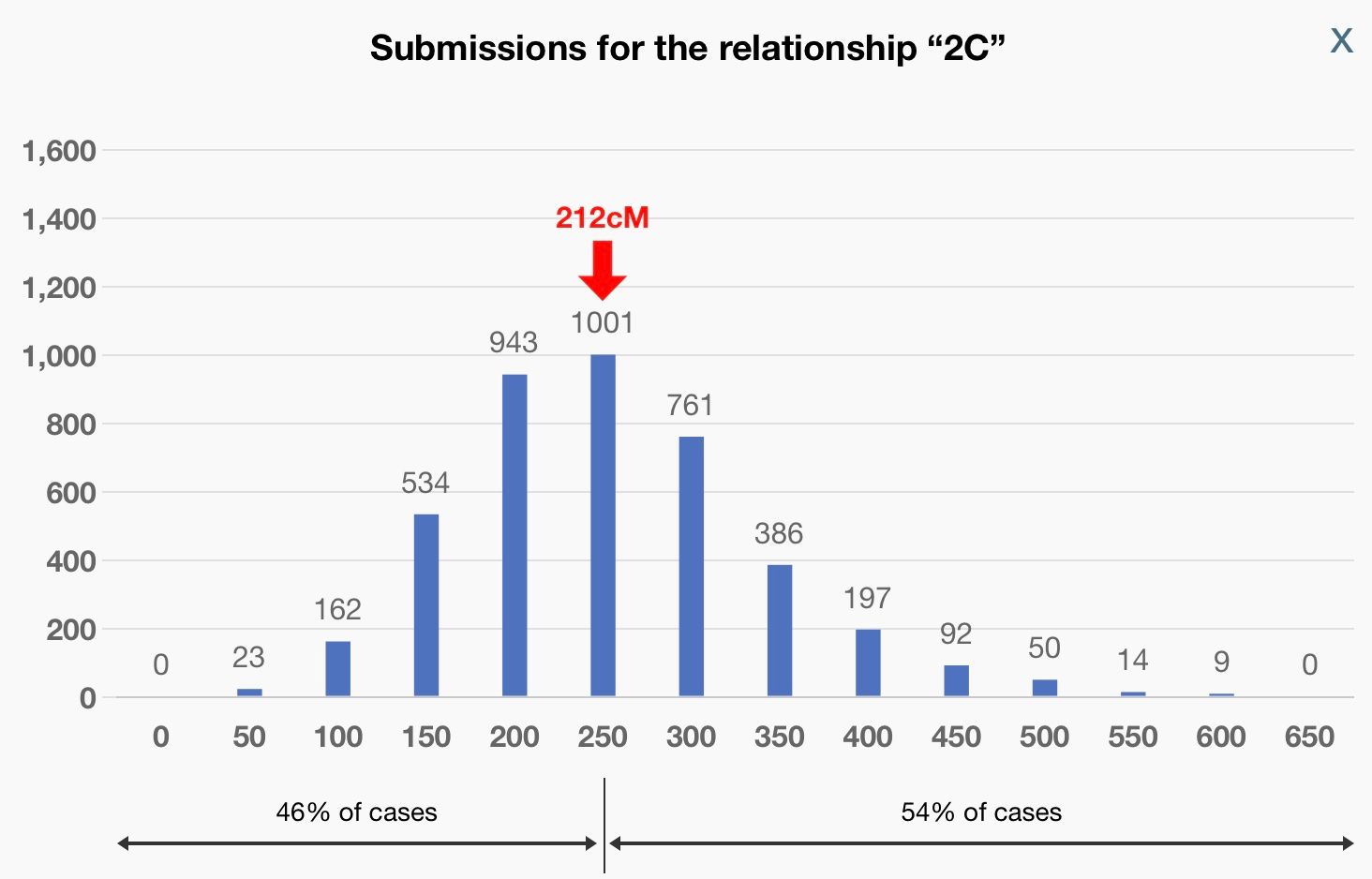
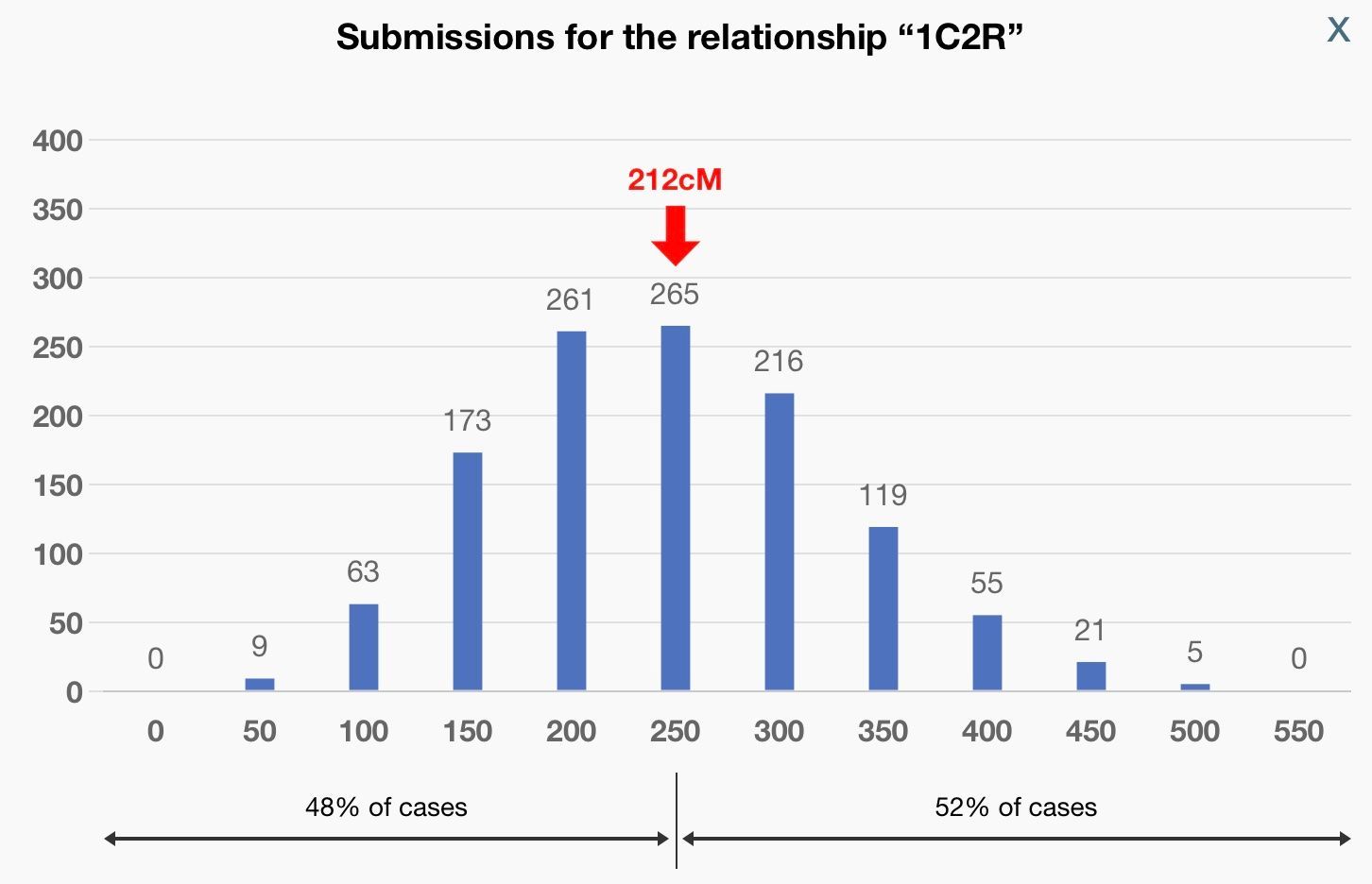
What are we looking at? Well, for both of these relationships the amount of 212cM sits at around the highest point of the graph. In other words the most popular number of cM for a second cousin is around 212cM and the most popular number of cM for a half-GG-aunt is around 212cM, and in both cases around 50% of data falls in the “up to 212cM” range. So, looking at the two options either could be equally likely. What this doesn’t offer is a judgement of which if those is more likely, given a known age difference between two individuals, and you have make your own assessment based on your knowledge of the individuals concerned.
Which is “right”?
It is a little like comparing apples and pears. The calculations behind each tool are very different. Plus, the Shared cM tool uses real amounts of shared cM data, whereas the new MyHeritage cM estimator uses real data on the likely relationships for a particular age difference.
Remember, in any of these scenarios we are only pulling out the most likely relationship. You will still have to do the ground work to find the genealogical relationship. In both the Shared cM Tool and the new CM Estimator there are much less likely options than those discussed here already, e.g in the case of 212cM third cousin appears in both tables way down the list when you don’t take age into account. Someone has to be the one that fits that relationship. Always, the genealogical research is required.
My take aways
This is a great new tool. cM Estimator offers a very user friendly interface to find a small number of possible relationships between yourself and a match very quickly. The age estimator looks fantastic and it will be interesting to see what users report in terms of how it compares with proven known relationships for DNA matches. I will be working with both the cM Estimator and the Shared cM Tool now for sure.
Sources:
[1] MyHeritage Releases cM Explainer™ to Predict Familial Relationships Between DNA Matches with Greater Accuracy, press release received on 2nd March 2023.
[2] MyHeritage blog post, Introducing cM Explainer™ to Predict Relationships Between DNA Matches With Greater Accuracy.
[3] The Latest Research Tools to Assist with Your DNA Matches, presentation from Gal Zrihen at RootsTech 2023, sponsored by MyHeritage.




